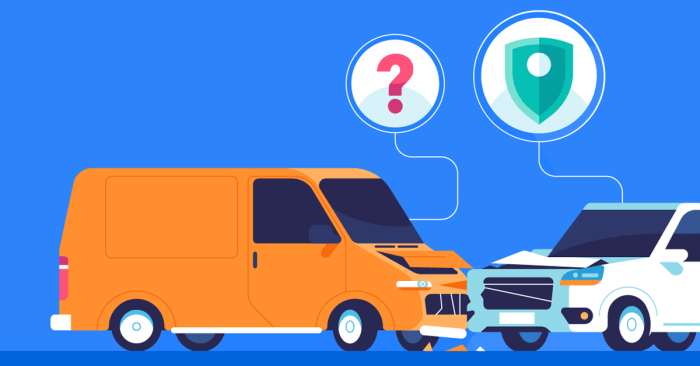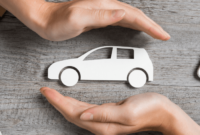Do I need uninsured motorist coverage? This introduction sets the stage for a deep dive into the necessity and advantages of this type of coverage, shedding light on crucial aspects that every driver should consider.
As we delve further into the topic, we will uncover key insights to help you make an informed decision regarding uninsured motorist coverage.
Understanding Uninsured Motorist Coverage

Uninsured motorist coverage is a type of insurance that provides protection in case you are involved in an accident with a driver who does not have insurance or whose insurance is insufficient to cover the damages. This coverage can help pay for medical expenses, lost wages, and vehicle repairs resulting from the accident.
Benefits of Having Uninsured Motorist Coverage
- Peace of mind knowing you are protected in case of an accident with an uninsured driver.
- Financial security as the coverage can help cover expenses that would have otherwise come out of your pocket.
- Ensures you are not left with extensive bills and repairs due to someone else’s negligence.
Real-life Examples of Situations Where Uninsured Motorist Coverage is Beneficial
- In a hit-and-run accident where the other driver flees the scene and cannot be identified.
- Accidents involving drivers who do not have insurance or have inadequate coverage to pay for all damages.
- Instances where the at-fault driver’s insurance company denies the claim, leaving you with no compensation.
Legal Requirements and Options: Do I Need Uninsured Motorist Coverage?

Uninsured motorist coverage is not mandatory in all states, but many require it to some extent. The specific legal requirements for uninsured motorist coverage vary from state to state, so it’s important to understand the regulations in your area to ensure compliance with the law.
Overview of Legal Requirements
In some states, uninsured motorist coverage is mandatory for all drivers, while in others it may be optional or only required for certain situations, such as when purchasing minimum liability coverage. States like New York, North Carolina, and Wisconsin require uninsured motorist coverage for bodily injury, but not for property damage.
Comparison of Coverage Options, Do I need uninsured motorist coverage?
When it comes to uninsured motorist coverage, drivers typically have options for both bodily injury and property damage. Bodily injury coverage helps pay for medical bills and lost wages if you’re injured in a car accident with an uninsured driver, while property damage coverage helps cover the cost of repairs to your vehicle.
Additionally, drivers may choose between stacked and unstacked coverage. Stacked coverage allows you to combine the uninsured motorist limits for multiple vehicles on the same policy, potentially increasing your coverage limits. Unstacked coverage provides coverage for each vehicle separately, which may be more cost-effective but offers lower overall coverage limits.
Implications of Not Having Coverage
In states where uninsured motorist coverage is optional, choosing not to add this coverage to your policy can have significant implications. If you’re involved in an accident with an uninsured driver and don’t have uninsured motorist coverage, you may be left responsible for covering your own medical bills, lost wages, and vehicle repairs out of pocket. This can result in financial hardship and stress, making uninsured motorist coverage a valuable investment for drivers in states where it’s not mandatory.
Cost vs. Benefits Analysis
When considering whether to add uninsured motorist coverage to your insurance policy, it’s essential to conduct a cost vs. benefits analysis to make an informed decision. This analysis involves evaluating the financial implications of both having and not having this coverage.
Cost of Adding Uninsured Motorist Coverage
Adding uninsured motorist coverage to your policy will result in an increase in your premium. The exact cost will vary depending on your insurance provider, location, driving history, and coverage limits. However, on average, adding this coverage can increase your premium by around 5% to 20%.
Potential Financial Repercussions of Not Having Uninsured Motorist Coverage
If you choose not to have uninsured motorist coverage and are involved in an accident with an uninsured or underinsured driver, you may be left to cover the expenses out of pocket. This can include medical bills, vehicle repairs, and other damages resulting from the accident. Without this coverage, you risk facing significant financial burdens in the event of a collision with an uninsured driver.
Tips for Balancing Cost and Benefits
1. Evaluate your risk: Consider factors such as the frequency of uninsured drivers in your area and your driving habits to assess your risk of being in an accident with an uninsured motorist.
2. Compare quotes: Obtain quotes from different insurance providers to compare the cost of adding uninsured motorist coverage to your policy.
3. Adjust coverage limits: You can adjust the coverage limits of uninsured motorist coverage to find a balance between adequate protection and affordability.
4. Seek discounts: Inquire with your insurance provider about any discounts or incentives that may help reduce the cost of adding uninsured motorist coverage to your policy.
Making an Informed Decision

When evaluating the need for uninsured motorist coverage, it’s essential to consider various factors to ensure you make an informed decision that aligns with your specific circumstances. Factors such as driving habits, location, and the value of your vehicle play a crucial role in determining whether uninsured motorist coverage is necessary for you. Here is a step-by-step guide to help you evaluate your need for this type of coverage and determine the appropriate limits:
Evaluating the Need for Uninsured Motorist Coverage
- Assess your driving habits and the amount of time you spend on the road. If you frequently commute or drive long distances, the likelihood of encountering uninsured motorists may be higher.
- Consider the location where you drive the most. Certain areas may have a higher rate of uninsured drivers, increasing the risk of being involved in an accident with one.
- Evaluate the value of your vehicle. If you own a high-value car, the cost of repairs or replacement in the event of an accident with an uninsured driver could be substantial.
Determining Appropriate Coverage Limits
- Review your current auto insurance policy to understand the coverage limits you currently have in place.
- Consult with your insurance provider to discuss your specific needs and assess the recommended coverage limits for uninsured motorist coverage based on your driving habits, location, and vehicle value.
- Consider factors such as medical expenses, lost wages, and vehicle damage when determining the appropriate coverage limits to ensure you are adequately protected in the event of an accident with an uninsured driver.
In conclusion, understanding the significance of uninsured motorist coverage can be the difference between financial security and uncertainty on the road. By weighing the costs against potential benefits, you can protect yourself and your assets in unexpected situations.
When it comes to auto insurance, one option to consider is liability-only auto insurance. This type of coverage typically only pays for damages and injuries you cause to others in an accident. It’s a more affordable option compared to full coverage, but it’s important to understand the limitations.
If you’re looking for more comprehensive coverage, you may want to explore collision coverage car insurance. This type of policy helps pay for damages to your own vehicle in case of an accident, regardless of fault. It can provide peace of mind knowing you’re protected in various scenarios.
When renting a car, it’s worth considering adding collision insurance for rental cars. This coverage can help cover the costs of repairs or replacement if the rental car is damaged in an accident. It’s a smart way to avoid potential out-of-pocket expenses.



